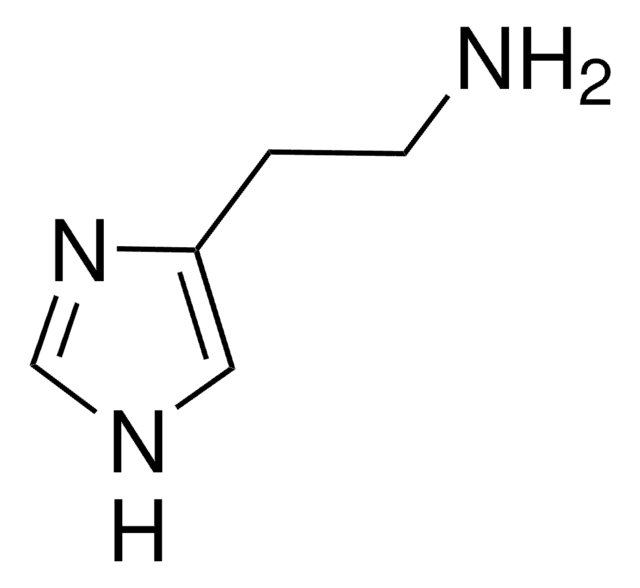49761
Spermidine
analytical standard
Sinónimos:
1,8-Diamino-4-azaoctane, N-(3-Aminopropyl)-1,4-diaminobutane
About This Item
Productos recomendados
grado
analytical standard
Nivel de calidad
Ensayo
≥97.5% (NT)
≥99.0% (GC)
caducidad
limited shelf life, expiry date on the label
técnicas
HPLC: suitable
gas chromatography (GC): suitable
índice de refracción
n20/D 1.479 (lit.)
densidad
0.925 g/mL at 25 °C (lit.)
aplicaciones
cleaning products
cosmetics
food and beverages
personal care
Formato
neat
temp. de almacenamiento
2-8°C
cadena SMILES
NCCCCNCCCN
InChI
1S/C7H19N3/c8-4-1-2-6-10-7-3-5-9/h10H,1-9H2
Clave InChI
ATHGHQPFGPMSJY-UHFFFAOYSA-N
¿Está buscando productos similares? Visita Guía de comparación de productos
Categorías relacionadas
Descripción general
Aplicación
Acciones bioquímicas o fisiológicas
Envase
Precaución
Palabra de señalización
Danger
Frases de peligro
Consejos de prudencia
Clasificaciones de peligro
Eye Dam. 1 - Skin Corr. 1B
Código de clase de almacenamiento
8A - Combustible corrosive hazardous materials
Clase de riesgo para el agua (WGK)
WGK 3
Punto de inflamabilidad (°F)
233.6 °F - closed cup
Punto de inflamabilidad (°C)
112 °C - closed cup
Elija entre una de las versiones más recientes:
¿Ya tiene este producto?
Encuentre la documentación para los productos que ha comprado recientemente en la Biblioteca de documentos.
Los clientes también vieron
Protocolos
HPLC Analysis of Biogenic Amines on Ascentis® RP-Amide
Nuestro equipo de científicos tiene experiencia en todas las áreas de investigación: Ciencias de la vida, Ciencia de los materiales, Síntesis química, Cromatografía, Analítica y muchas otras.
Póngase en contacto con el Servicio técnico











